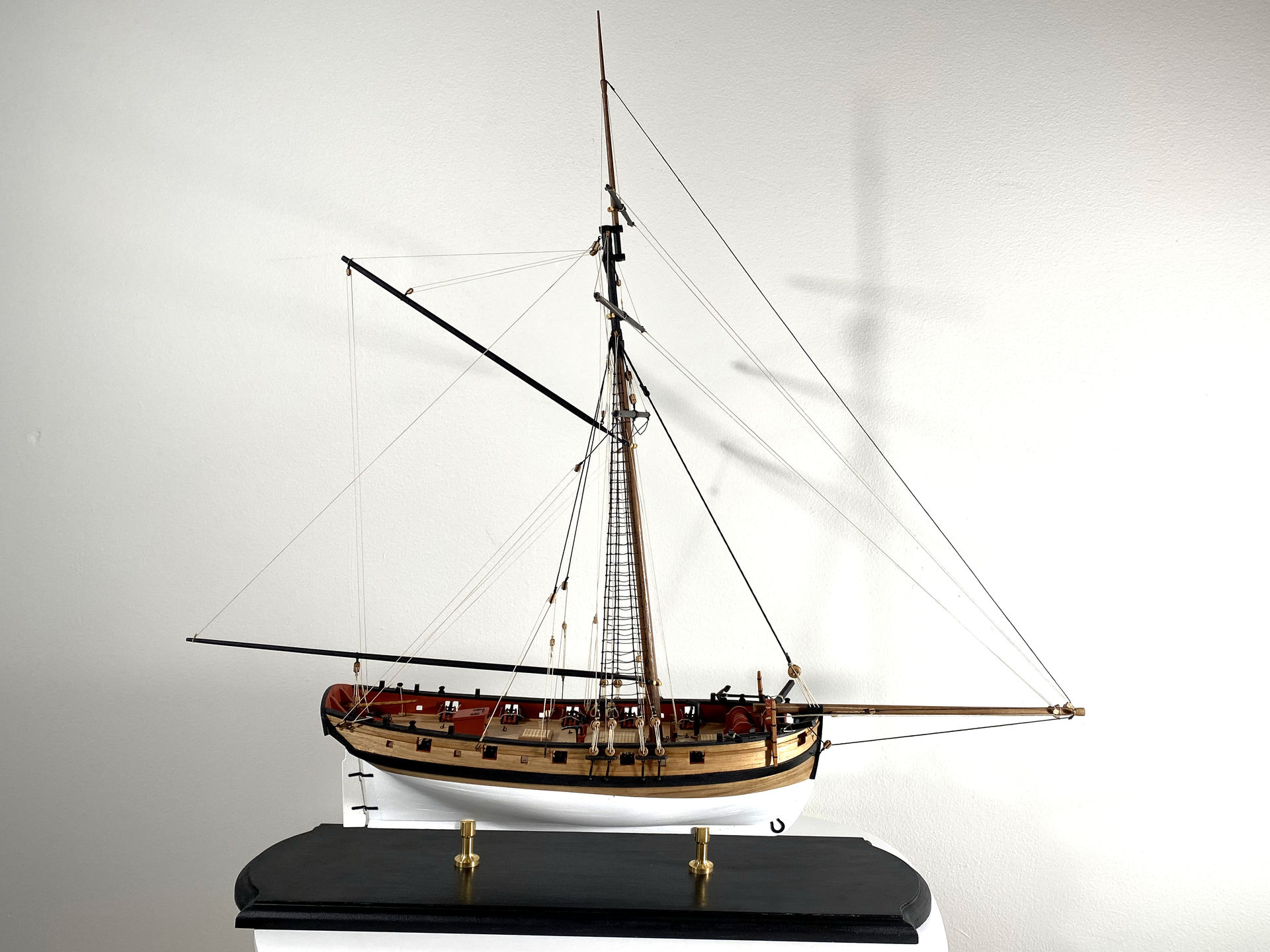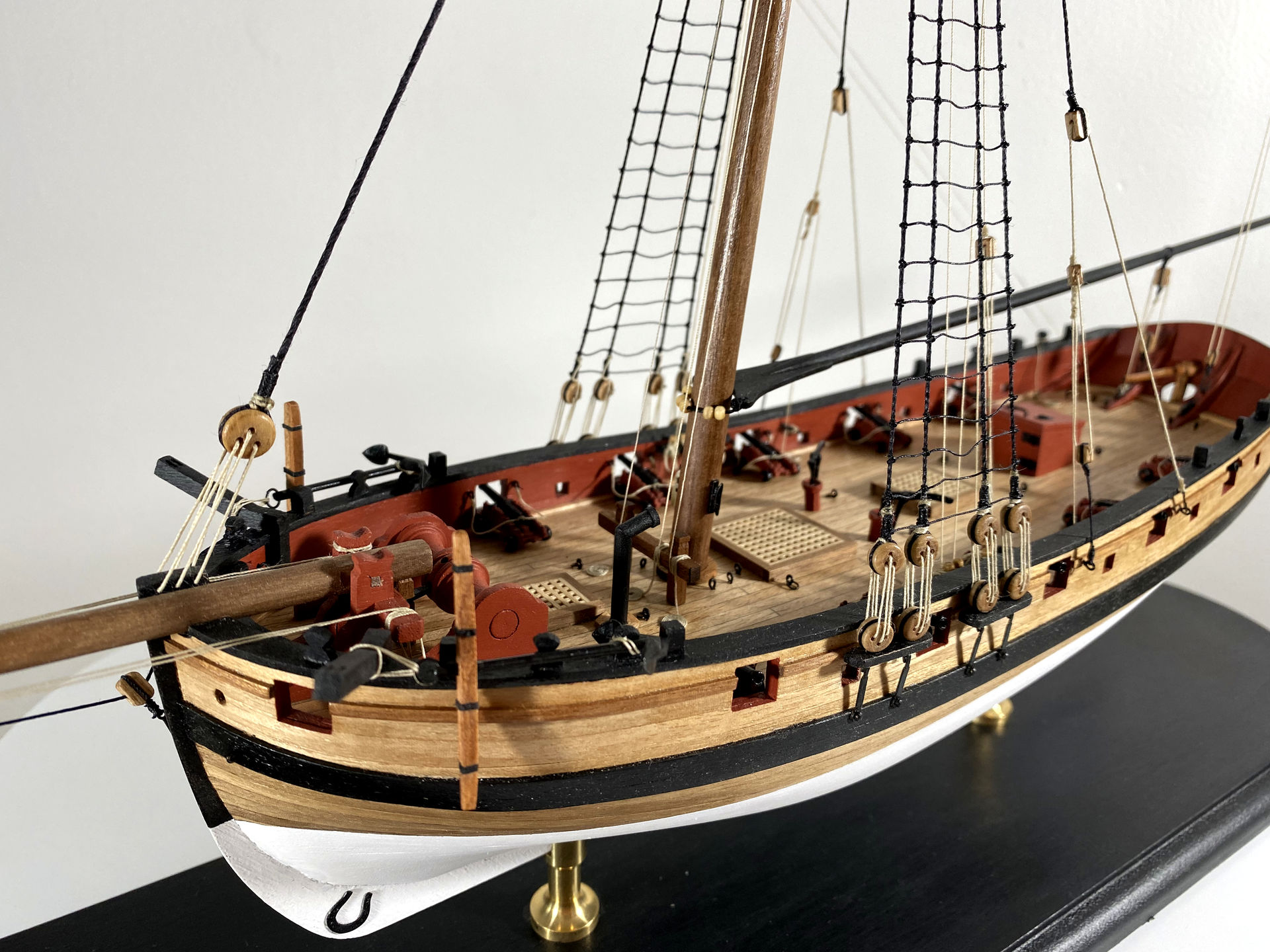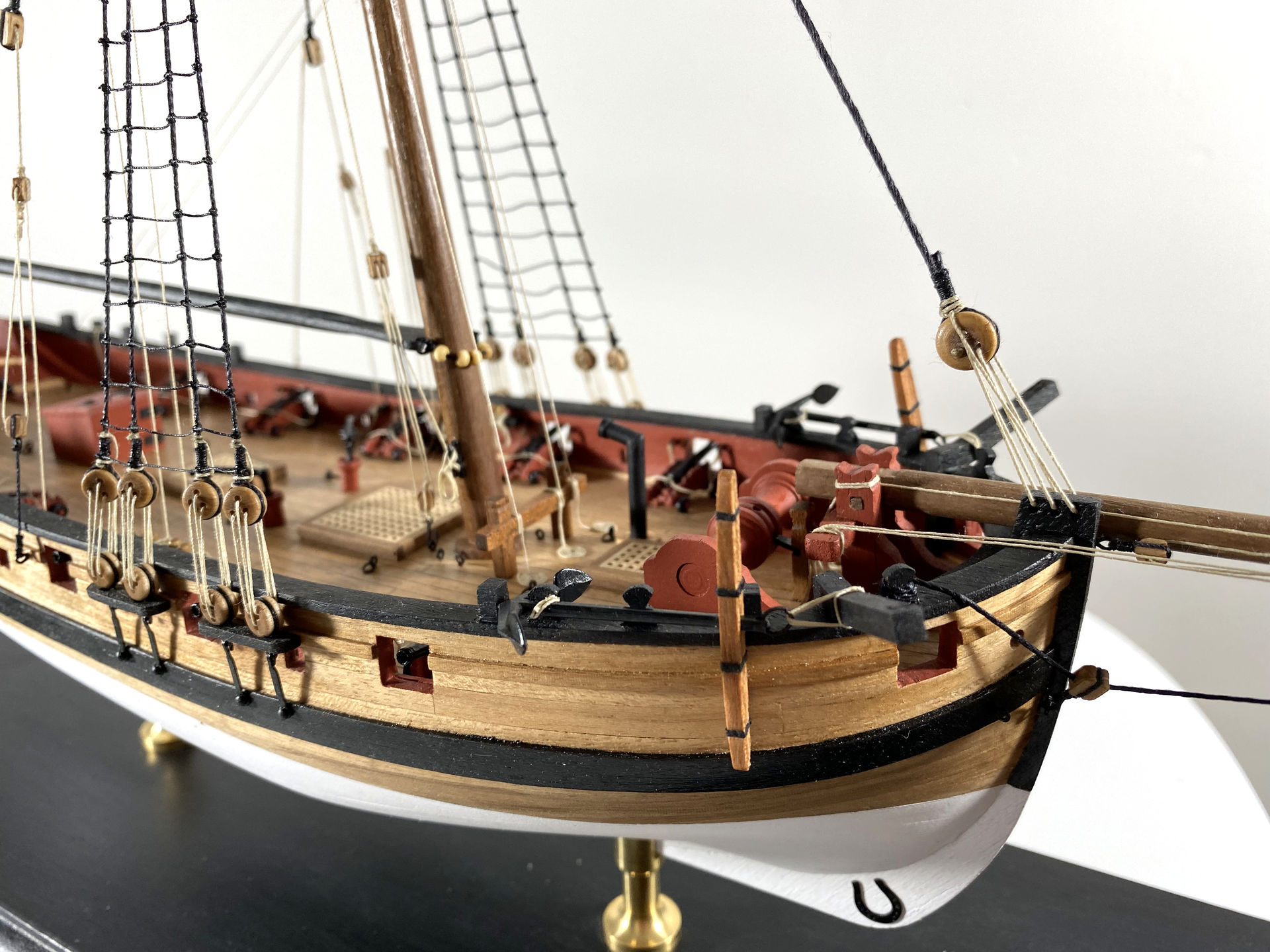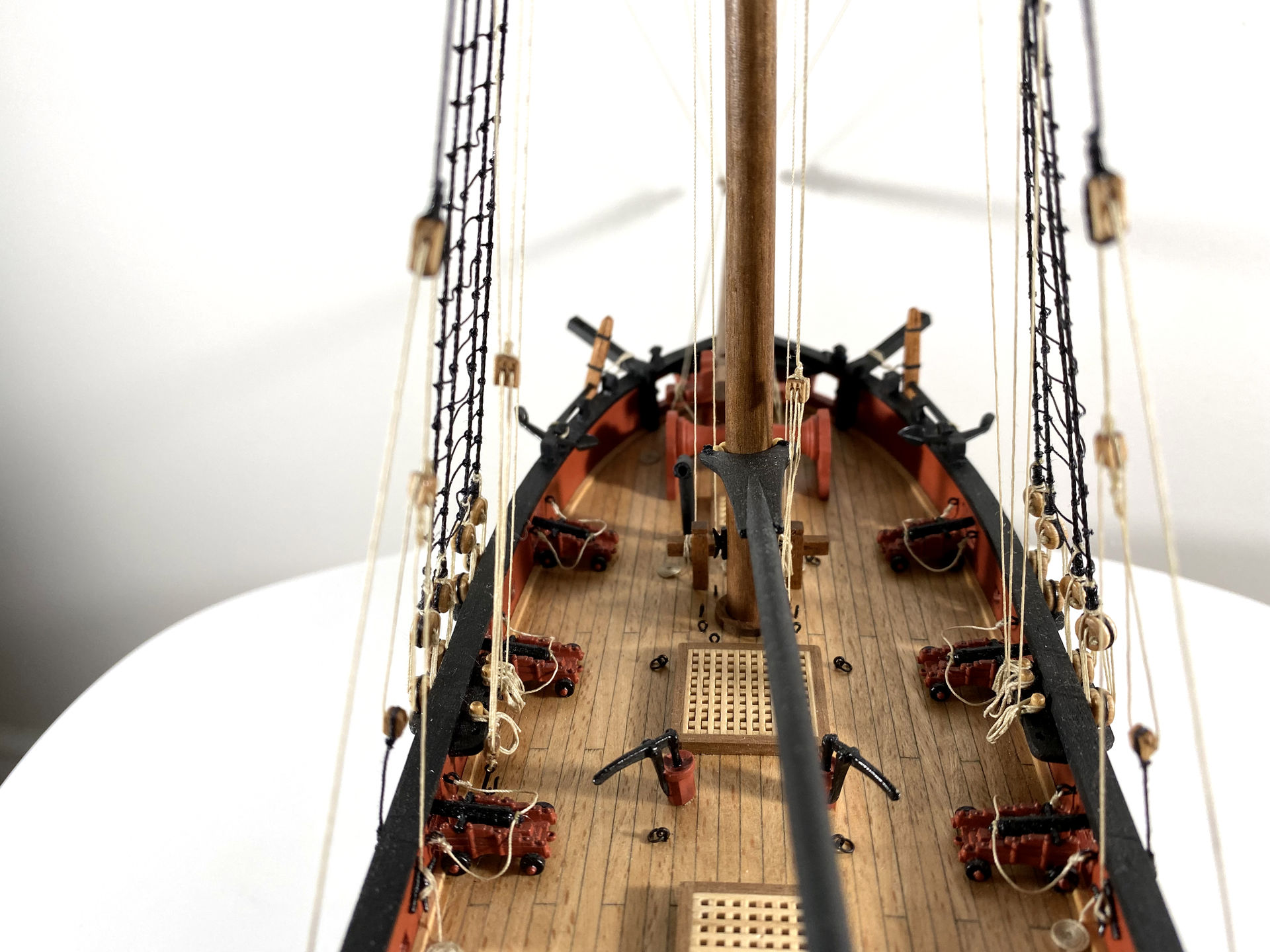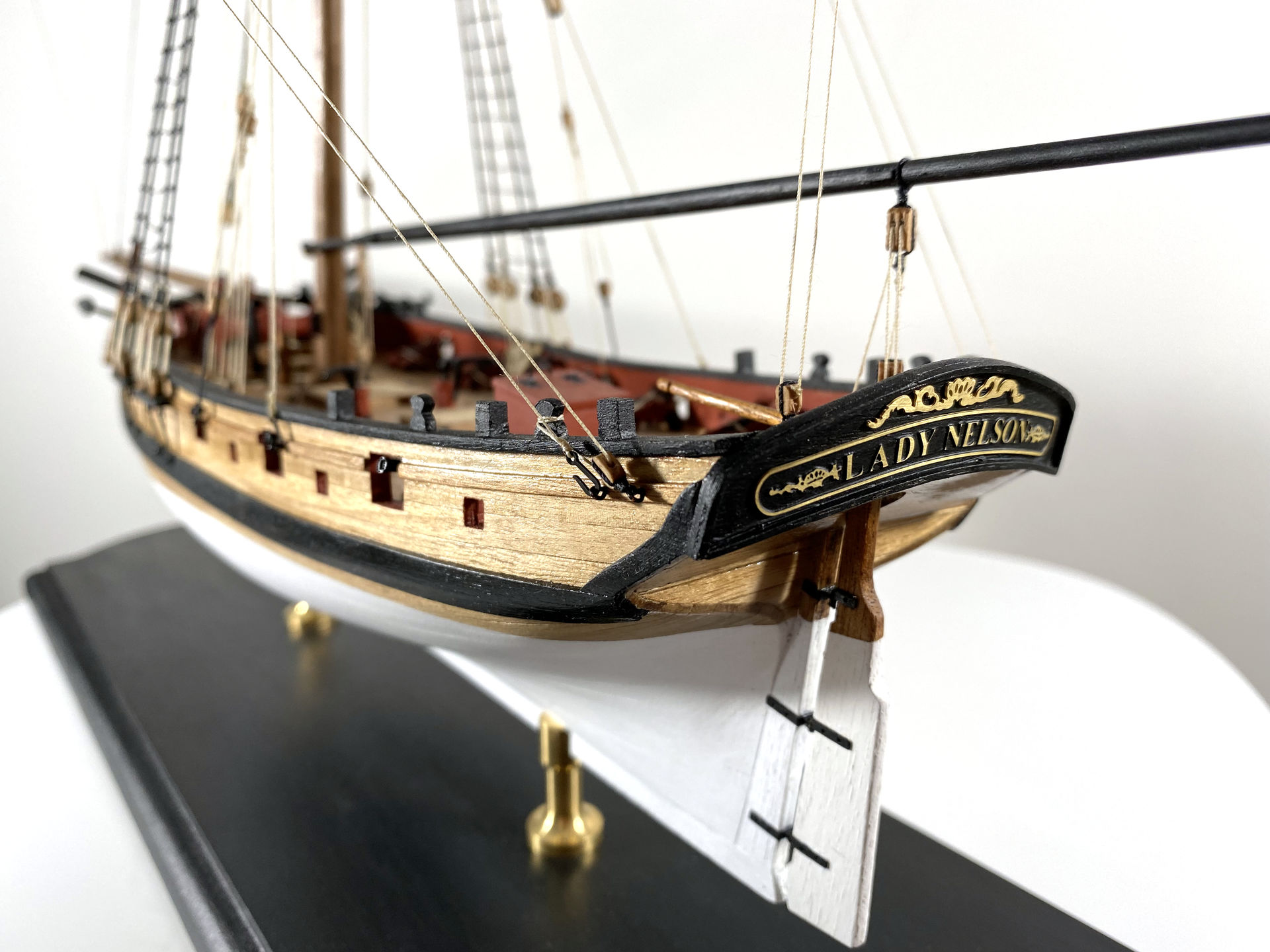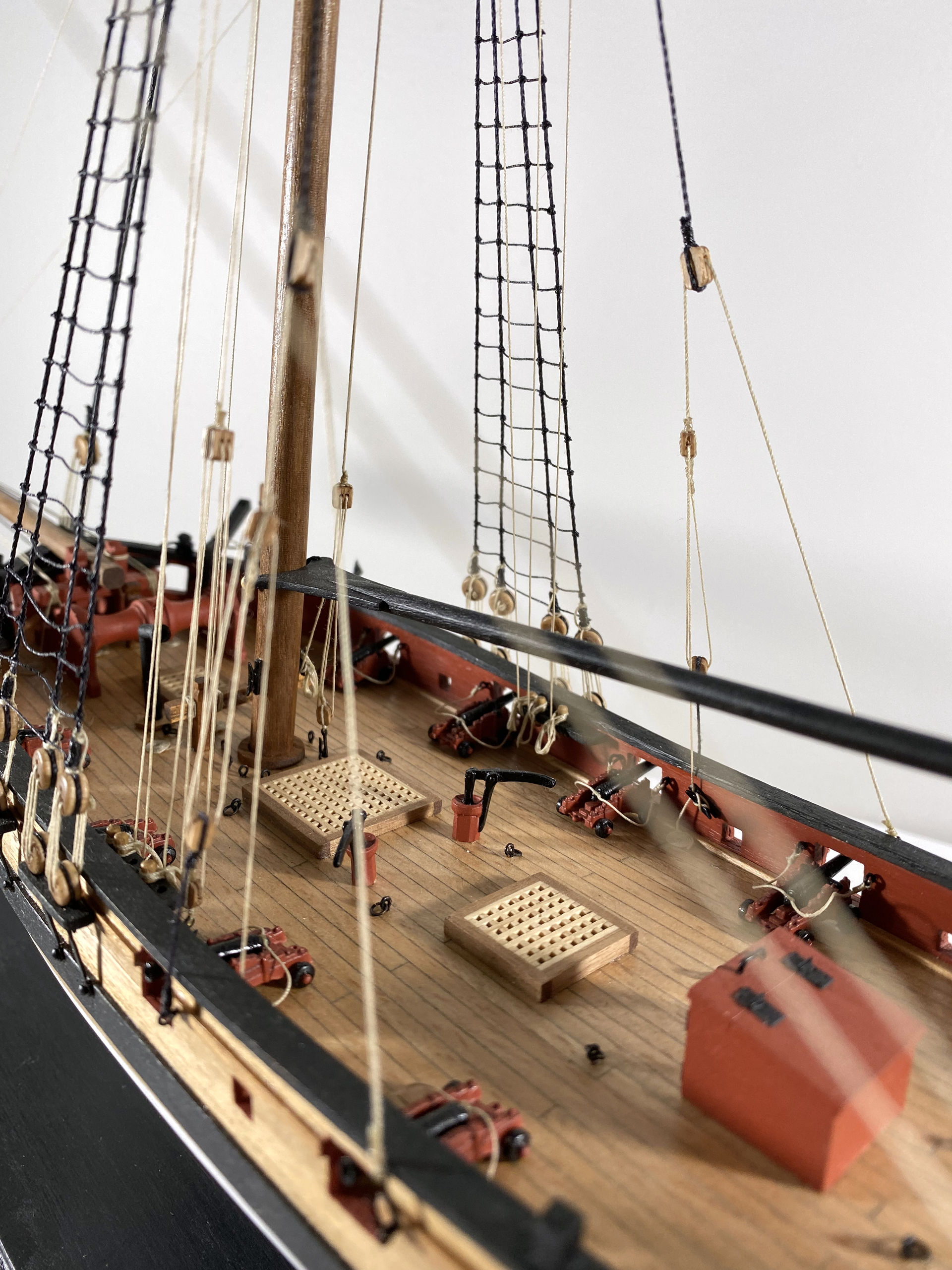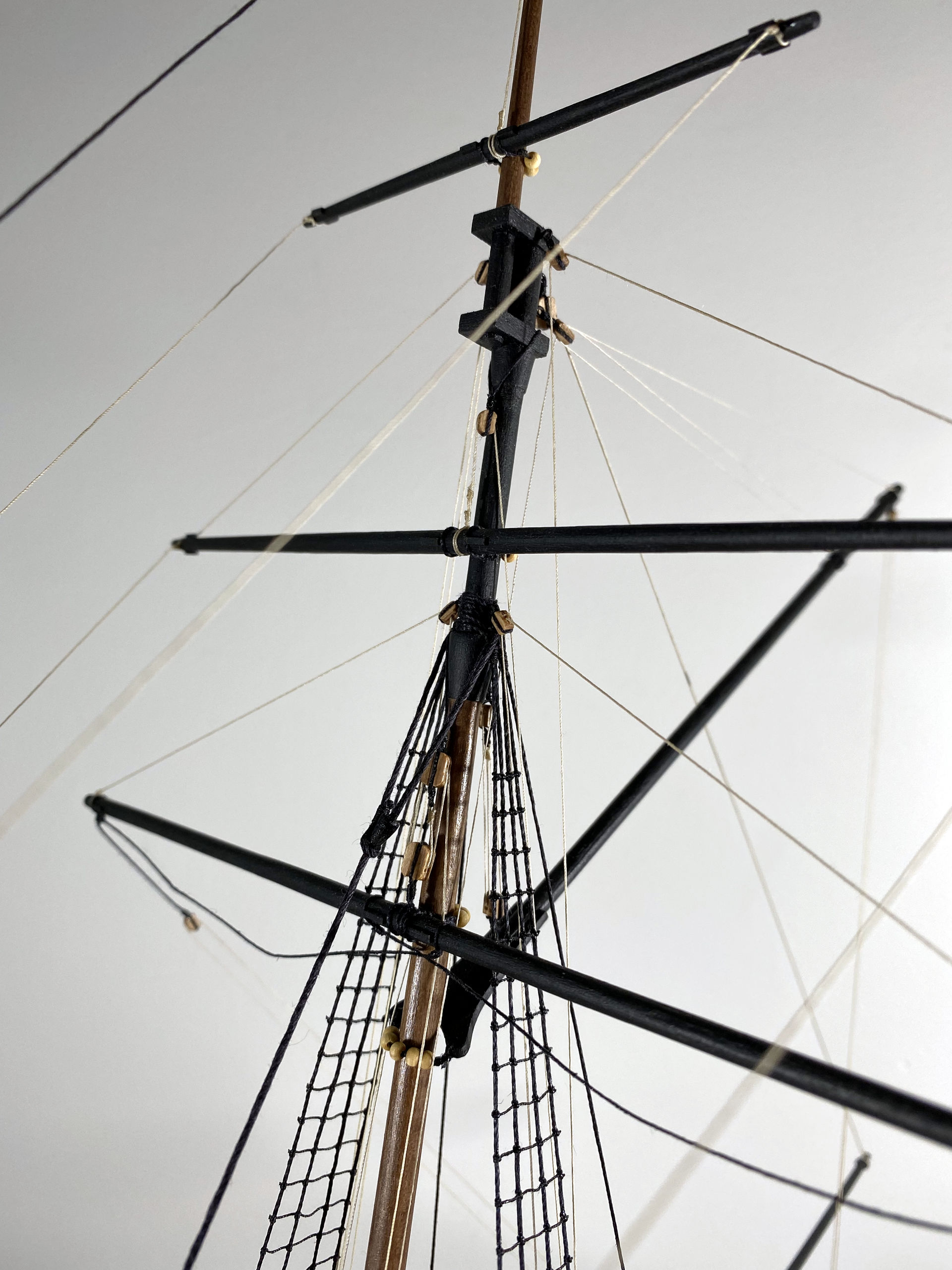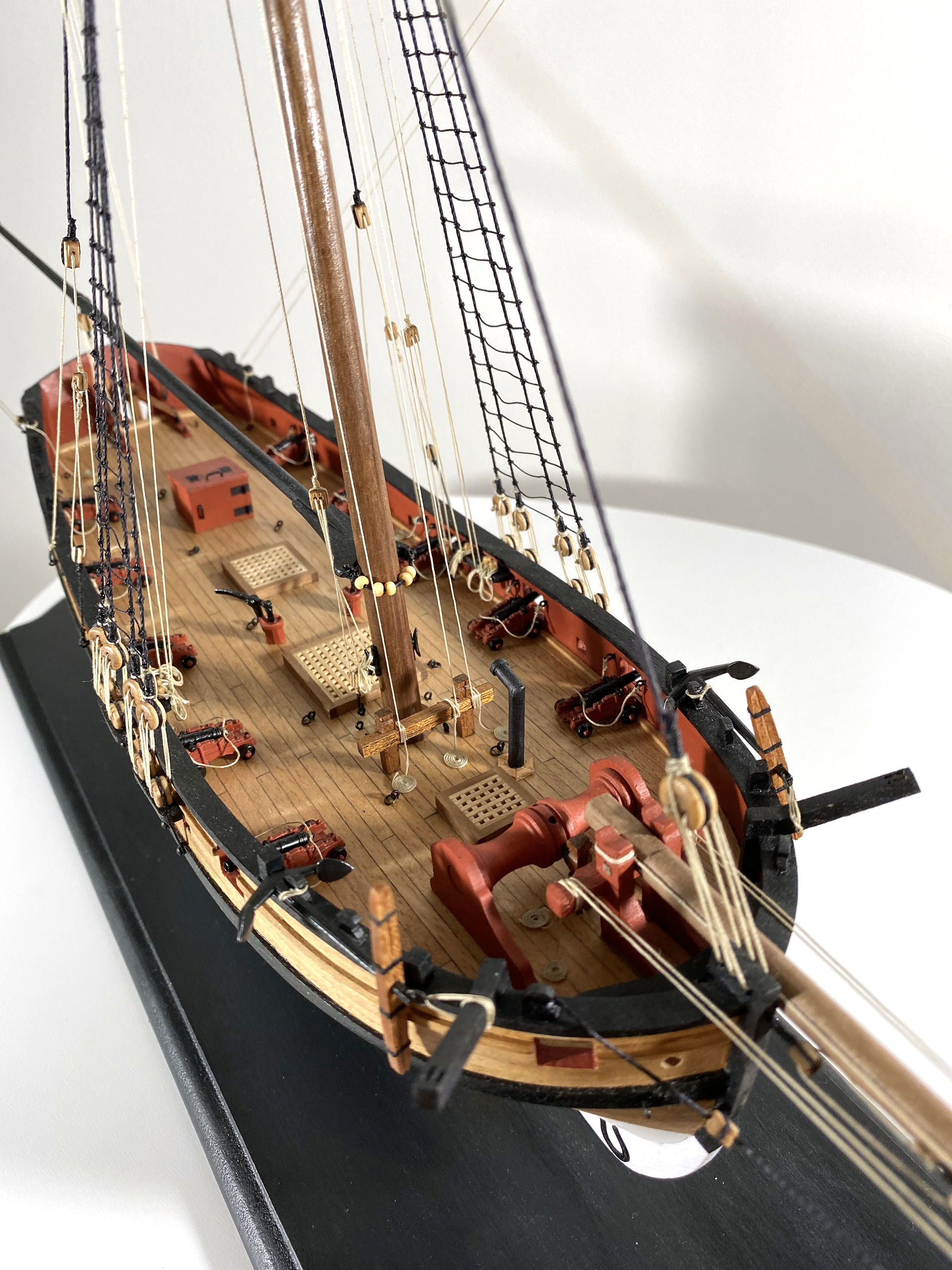I wanted to build a cutter since I first saw someone else build in the modelshipworld.com gallery. They look very graceful and elegant and fast!
HM Cutter Lady Nelson
Funny enough, there was no such ship, instead this model depicts an abstract 18th-century British cutter, inspired by Sherbourne-class. As I was attracted by the looks of the subject, not by the history of a particular ship, it didn’t bother me.
Model quality
This model was designed over 20 years ago by legendary Chris Watton (who now opened his own business, Vanguard Models), and despite it’s age and entry level it still is a pretty good kit.
Plans are quite good (although have few minor mistakes), but the building instructions are very brief.
Wood quality is okay, I mostly liked the provided planks, however from my experience OcCre is more consistent and generous with provided wood.
For the laser-cut parts, the quality of walnut was below average, and one particular part (the one that holds the bowsprit) clearly had wrong dimensions.
Rigging thread is the usual Amati stuff, which I use for all my other builds anyway because I think it’s great.
Photo-etch details are included (seems like half of it was added in this ’new edition’ of the kit), which is always a welcome addition for me.
All and all, despite few shortcomings, the kit is very well designed, has adequate price point (I’ve got mine for ~90 EUR), and is definitely suitable for beginners, just as advertised on the box.
Build notes
This is my 9th wooden model, and a relatively simple subject, which combined with very good design of this kit lead to a smooth and very enjoyable build.
Here you can see first planking layer finished, with walnut planks being sorted by colour for the second planking.
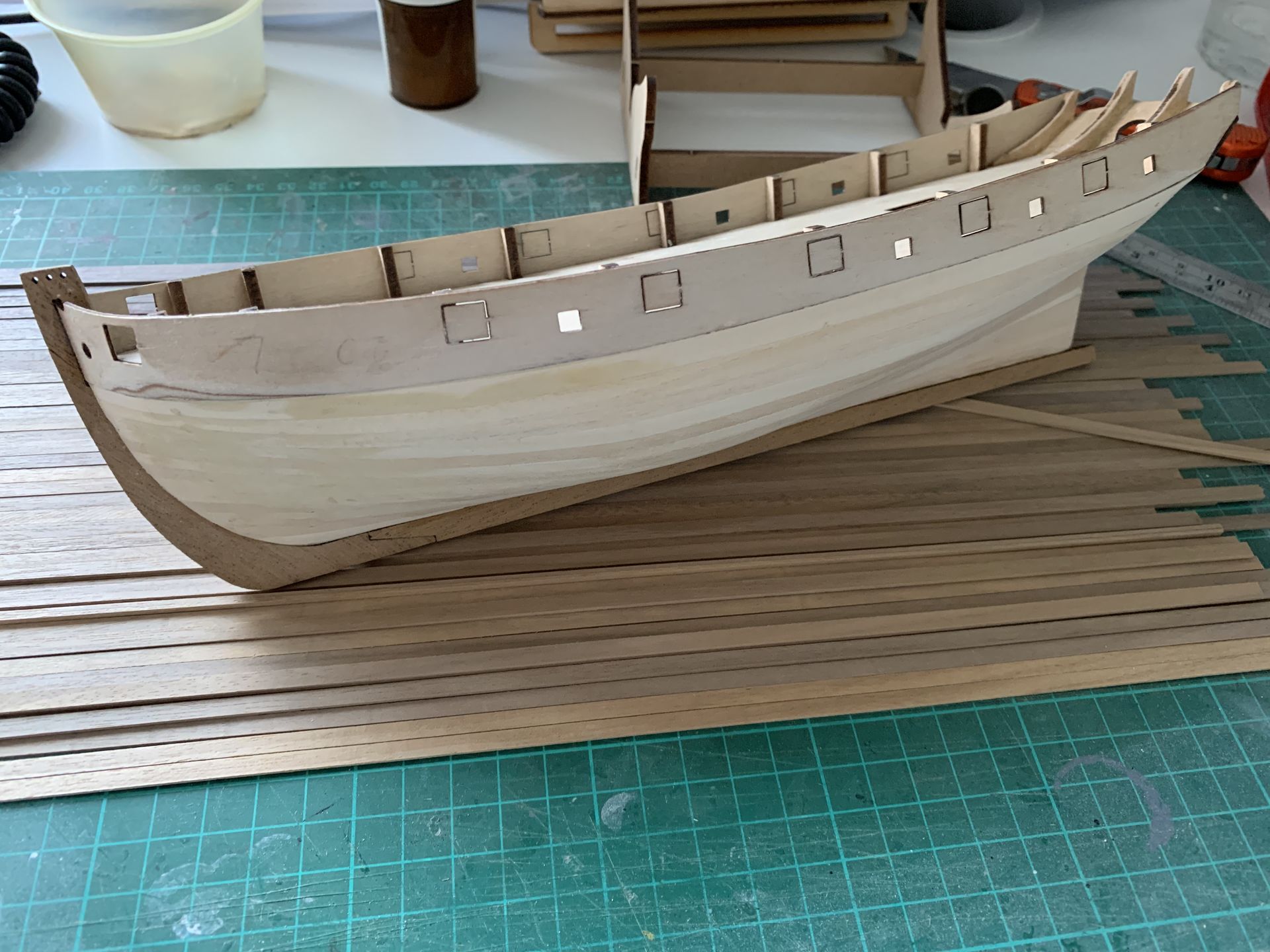
Second planing complete. I deliberately used darkest planks for the bottom of the ship, as everything below the waterline will be painted anyway.
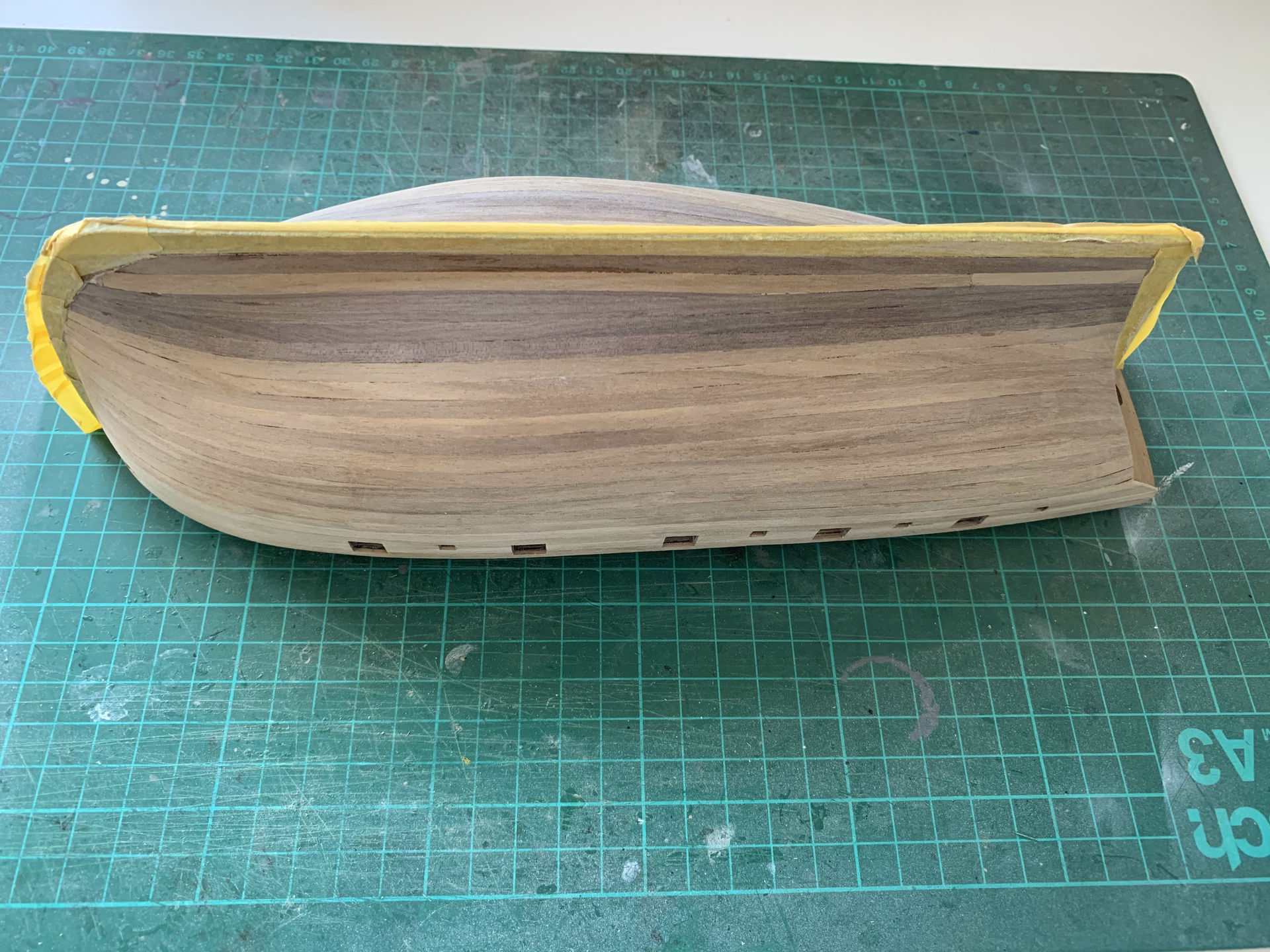
Deck planked, I used somewhat arbitrary 3-plank pattern based on books on sailing ships I read, as the plans for such beginners kit doesn’t provide any pattern at all.

Added hinges to the deck furniture, made from black artist cardboard.

And here is the biggest mistake I made during the build - was building after hard day at work and installed chains in the wrong position.
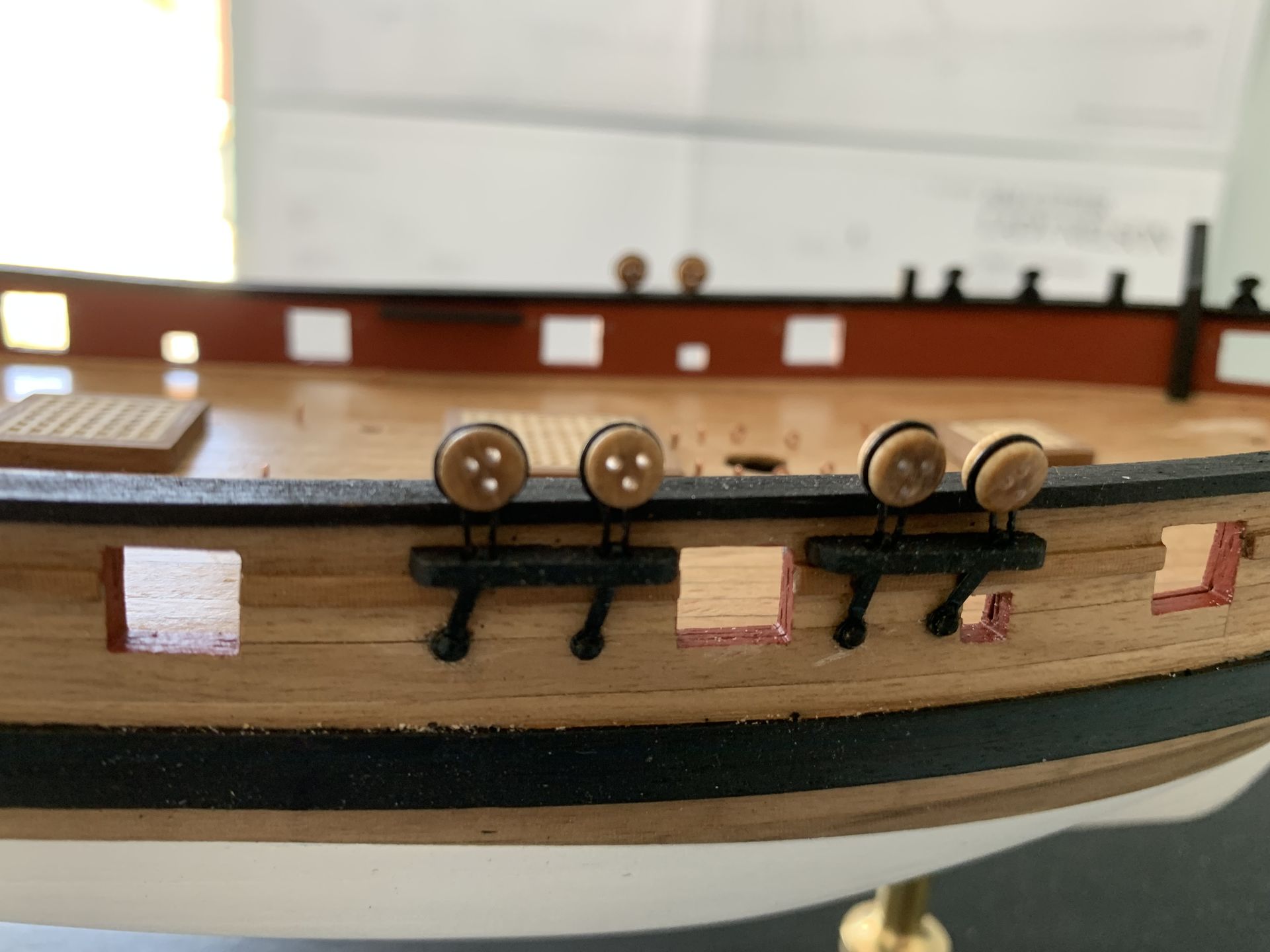
Had to re-do it next day when I realized how stupid I was, filling and sanding and staining the holes took quite some effort.
Here is the corrected version, where chains are attached to the whales.
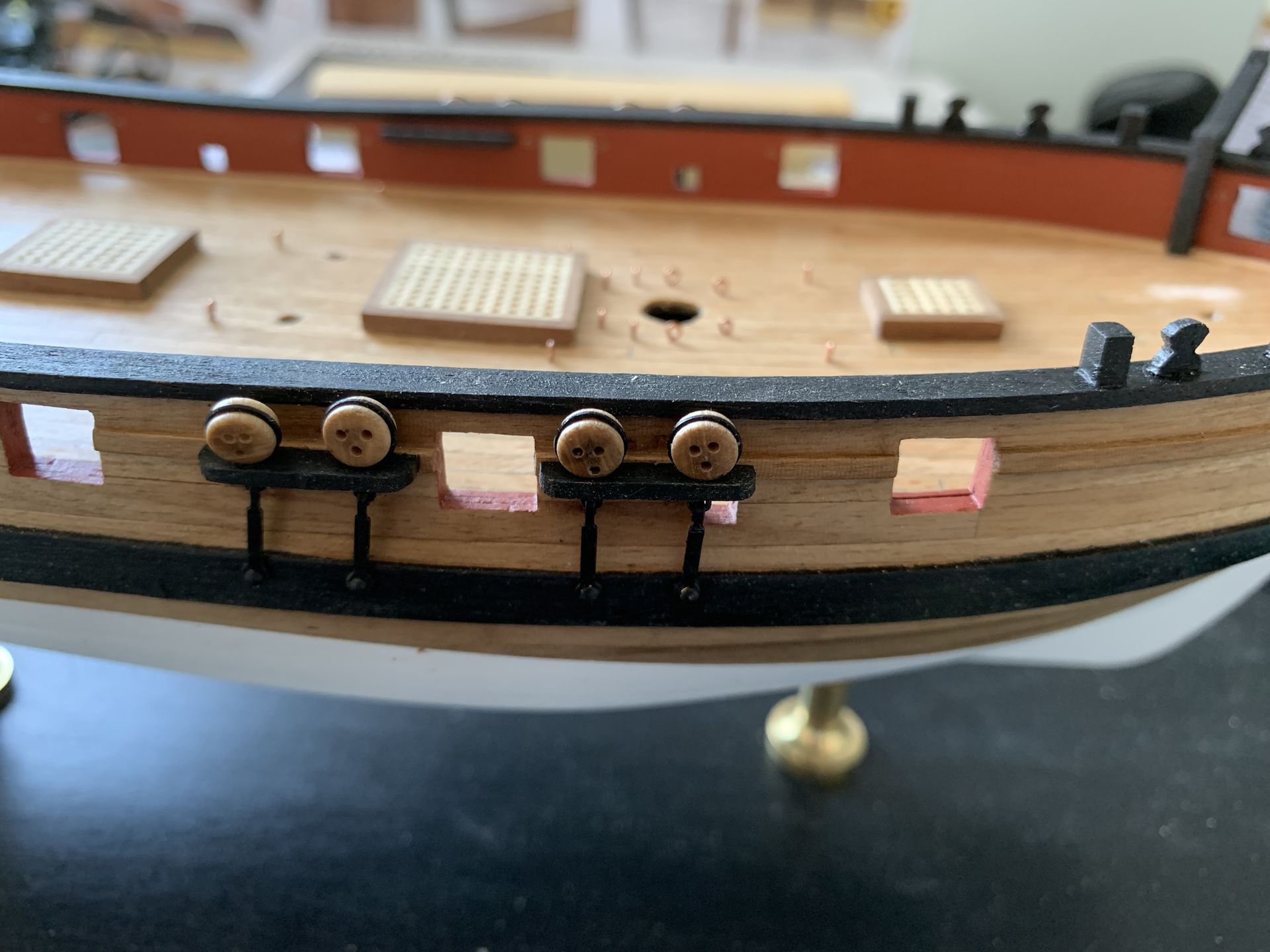
Here all the gun carriages are already rigged. As you may notice, catheads are gone. They are made from very fragile walnut sheet,
and I kept breaking them while working on the ship. After glueing them third time and breaking again, I decided to leave them for the final step of the build.
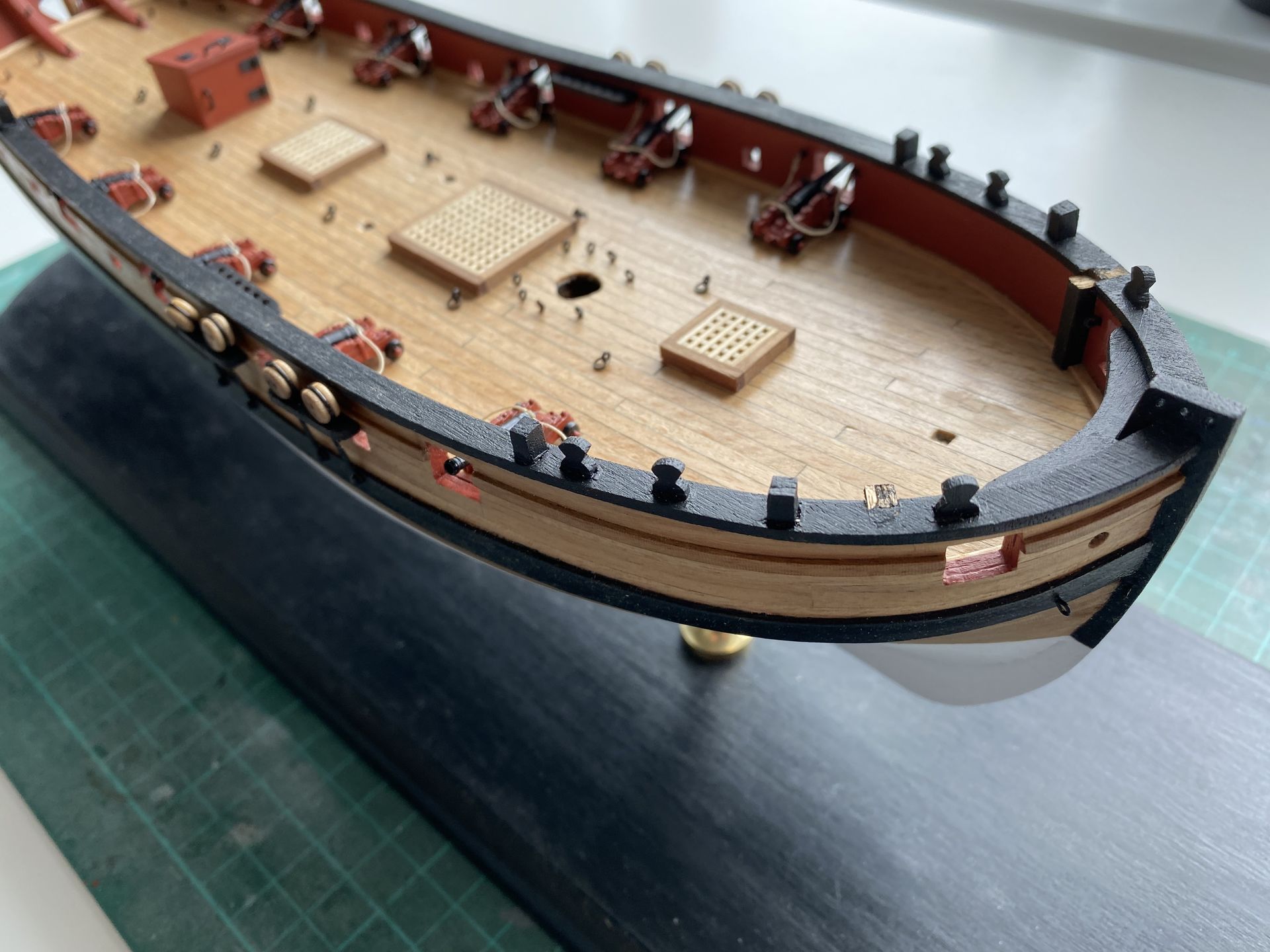
Rigging was done with provided blocks and Amati thread. I switched to the black Amati thread I already had whenever plans suggested staining provided beige thread just to save time.
I scratch-built few parts:
- tiller is hand-carved from some leftover walnut (because provided laser-cut part was too crude and out-of-scale)
- anchor stock is made out of leftover cherry I had (because I didn’t want to bother painting provided cast metal part to look like wood when it can actually be made of wood)
- chimney is made from 3mm dowels (because from all the ship-building books I read and references I found there definitely should be a chimney)
Conclusion
I had great time with this kit, and absolutely love the end result. The whole build took about 8 months, and I enjoyed every step of it, except for the ratlines of course (it’s just so mind-numbingly boring…).
It was my first time scratch-building stuff out of wood, it was fun and I’m pretty chuffed with the result.
Overall, pretty good and inexpensive beginner’s kit that depicts a stunningly beautiful subject.
Gallery
